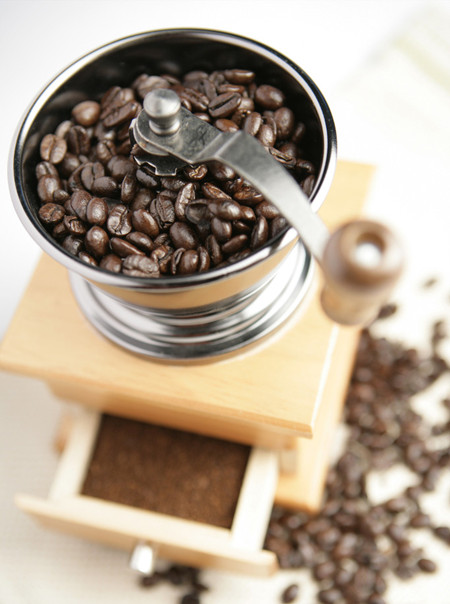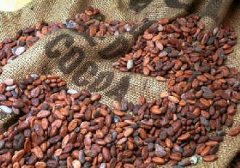Coffee basics What exactly is "mocha"

As early as more than 500 years ago, Yemen produced coffee in an ancient way. In the early 17th century, the first Yemeni coffee sold to Europe was exported through the ancient port of Mocha, which amazed Europeans. The delicious coffee shipped from the port of Mocha was called "Mocha Coffee", which is the origin of the name "Mocha Coffee".
Neighboring Ethiopia, across the Red Sea, also sells coffee through the port of Mocha, so Ethiopian sun-treated coffee is often referred to as mocha (such as Mocha Haral Ethiopia Harrar). Today, the old port of Mocha has long been abandoned because of sediment deposition (today's place name Al Makha) and is exported to the northwestern port of Hudaiida (Hodeida). However, people have long been accustomed to the name of Mocha, which is famous in the sky.
Deep-roasted Yemeni coffee often shows a chocolate-like bitter sweet flavor, affecting today's fancy coffee seasoned with chocolate sauce is also known as the word "mocha". So when you see the word "mocha coffee", it may refer to pure Yemeni coffee, or neighboring Ethiopian coffee, or simply fancy coffee flavored with chocolate sauce.
Finally, because of Turkey's century-old monopoly on coffee exports, the word mocha is also known as coffee. In Japan, many people still think that coffee is mocha.
Yemeni mocha
Mocha is a port in the Arab Republic of Yemen. Before the 6th century, Yemen was called Arab, so the coffee trees shipped from them to other places were also known as Arabica coffee trees, the birthplace of Arabica. Once known as "mocha coffee", it was all the rage, but now it is no longer a grand occasion. At that time, coffee beans grown in the Arab region were shipped through the port of Mocha, so the coffee produced in the Arab region was collectively referred to as mocha coffee. There was a whirlwind of mocha coffee in Yemen, which blew a whirlwind around the world, but unfortunately, the good times were not very good. Under the political turmoil and unplanned planting, the production of mocha was very unstable.
Yemen is the first country in the world to produce coffee on a large scale as a crop. The method of cultivation and treatment of mocha coffee in Yemen today is basically the same as that of hundreds of years ago. On most coffee farms in Yemen, coffee farmers still resist the use of artificial chemicals such as chemical fertilizers. Coffee farmers plant poplars to provide shade for coffee to grow. As in the past, these trees are planted on steep terraces to maximize the use of less rainfall and limited land resources. What is more unique is that Yemeni mocha beans are still shipped in a bag made of straw, rather than chemical woven bags in other places. If you are a pure naturalist, the Yemeni mocha can satisfy your desire to drink coffee that has been completely natural.
Among the common Yemeni mokas, Mokha Mattari is the most famous. Produced in the province of Bani Matar (another word for Bany Mattar), Madali is a coffee produced at high altitude. it usually has a good aroma of red wine, dry fruit, thick taste and bitter sweetness of chocolate when roasted deeply.
Due to the sharp decline in production in recent years due to political instability in Yemen (civil war broke out in 1994, coffee production has been reduced from 120000 7000 bags in 1957 to only 40, 2000 bags) Mokamadali, the most famous in the boutique coffee industry, has become a target for water adulteration. mixed with lower-grade shoddy beans, it is not a guarantee of high quality, even if it is labeled Madali. Good quality Madali bean shape is small, raw beans have sweet wine aroma and moderate ripe fruit fermentation flavor, choose a good Madali, her performance will not disappoint coffee gluttons!
Mokha San'ani is a mixture of tens of thousands of small farms on the hillside near the capital San'a (left, Sana'a, Yemen). Planted at a slightly lower altitude than Madali, generally speaking, it tastes thinner and less acidic, but it has a good fruit flavor and often has better ripe fruit and wild game than Madali. According to my experience, the quality of Sanani varies greatly in recent years, and sometimes there are inferior goods with flat flavor, fishy smell and excessive fermented flavor. Careful cup testing and selection is a must for coffee makers to do their homework and must not be lazy.
Mocha Yishi Mary (Mokha Ismaili) is one of the traditional ancient tree species, planted at a high altitude, more than 6500 feet, characterized by more round beans, smaller beans than Madali, thick taste, high complexity, in general, often surpass the performance of Madali. This is the least produced and most expensive Yemeni mocha (Yemeni mocha is no longer cheap). The high-quality Mokayishi Mary is produced in Hirazi (although it is famous as Bani Matar, it is the best-known local reputation in Yemen). The highest elevation in Hirazi is 8000 feet.
Mokha Rimi is produced in the Djebel Remi (also known as Raimi, Rayma) area and is similar in quality to Sonani. In my experience, Mokaremi is usually slightly fermented, occasionally showing a surprisingly strong sweet aroma of raisins, and when baked properly, the coffee beans smell like opening a full-bodied bottle of jam.
Mokha Yafeh, which is produced in the southern Yemeni province of Yafeh (also known as Yaffe), belongs to the uncommon Yemenmoka. It is the only "southern flavor" in Yemen, and its production is small. Almost all of it is sold to the neighboring United Arab Principality, and it is rarely seen in the international boutique coffee market.
Many planting areas of Mocha in Yemen have also achieved different schools according to their planting areas. The chocolate and sour taste of MATTARI Mocha, the rough and fragrance of SANANI Mocha, together create "Mocha", the diamond in the crown of Asian coffee. A coffee expert once said: "the taste of Yemeni mocha is so diverse that it varies not only from different places, different tree species, and different batches, but also from each sack or even every cup." "because of his complexity and variety, it is a challenge for coffee roasters to bake the best flavor of Yemeni mocha! Medium and shallow roasting shows sweet fruit, mild, warm sun-fermented flavor; deep baking shows a strong aroma of red wine, bitter sweet chocolate aftertaste, in the taste again and again, "the aftertaste is lingering for three days." No wonder there are so many coffee gluttons who are so keen on this way, listing the Yemeni mocha as their favorite!
Ethiopia (Ethiopia) (Africa)
The origin of the name of coffee comes from Canada in the southwest and Sidamo in the south. In addition, the Eastern Highland Hara is also famous for its coffee. The beans are small and fragrant, and "Hara. The special name of" Mocha "and" Longgubeli "has a unique flavor, usually only known as" Mocha ". Its specification is divided into G (geade) 1-G8 according to the ratio of defective beans. Recently, the favorite is the high-quality "washing type. Ethiopia".
Important Notice :
前街咖啡 FrontStreet Coffee has moved to new addredd:
FrontStreet Coffee Address: 315,Donghua East Road,GuangZhou
Tel:020 38364473
- Prev

How to make a good pot of coffee
First of all, you must have a good bag of coffee powder, or buy your own coffee beans and grind them yourself. only by ensuring its quality can your work not be based on wasted time. Just like us, no matter how gaudy and charming you are, you must first be called a boutique in your heart; otherwise, all external things will be wasted. Stick to your self-worth. Every
- Next

The etiquette of drinking coffee.
Behavior etiquette to taste coffee in a cafe is one of the daily formulas for the French, so it is not a big deal. The purpose of going to a cafe is mostly just to chat, so take it easy. But in cafes frequented by high-class people, personal demeanor and clothing are very important. There are some unwritten traditional coffee politeness, which may be important, such as not one.
Related
- Beginners will see the "Coffee pull flower" guide!
- What is the difference between ice blog purified milk and ordinary milk coffee?
- Why is the Philippines the largest producer of crops in Liberia?
- For coffee extraction, should the fine powder be retained?
- How does extracted espresso fill pressed powder? How much strength does it take to press the powder?
- How to make jasmine cold extract coffee? Is the jasmine + latte good?
- Will this little toy really make the coffee taste better? How does Lily Drip affect coffee extraction?
- Will the action of slapping the filter cup also affect coffee extraction?
- What's the difference between powder-to-water ratio and powder-to-liquid ratio?
- What is the Ethiopian local species? What does it have to do with Heirloom native species?

